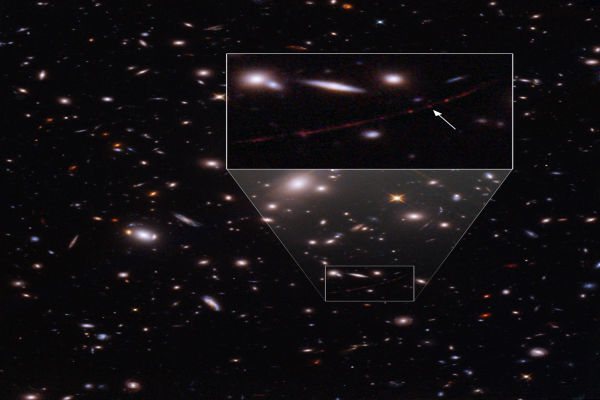Being 13.8 billion years old, the universe is the current estimation of the creation itself. We have recently sent NASA’s James Webb Space Telescope at the position L2 to look back into the time, looking into the Infrared-NIR radiation. So, we can look for one of the first stars and galaxies in the universe. Interestingly, a staggering discovery was made by the Hubble Space Telescope as “Earendal,” the farthest known star yet – relating from the beginning of time, astronomers are calling it. In old English, it’s known as the “Dawn Star.”
Earendal was discovered through the Gravitational Lensing technique through the Hubble Space Telescope, to a comoving distance of 12.9 Billion Light-Years away from the HST. The distant star could be from the first 900 million light-years from the big bang. This discovery broke the previous farthest known star MACS J1149 Lensed Star 1, a supergiant blue, with a distance of 9.34 light-years in time, a distant second to only WHL0137-LS discovered earlier this year. The research came to the public by the astronomers in a paper in nature, “A Highly Magnified Star at Redshift 6.2”, suggesting the last confirmations of the star by James Webb Space Telescope’s observations for spectral classification and retaken distances.

The studies mentioned above suggest that the mass of these types of stars is somewhere approximately 50 times of our sun. The image shown from the Hubble data made the discoverer notice the fragile, long red arc, which seemed to be a galaxy warped and amplified light by the cluster. Atop that bright red arc, there’s “Earendel,” a spot that is too small to be considered a galaxy; after rigorous research and methods, “We stumbled into finding that this was a lensed star.” quoting Brian Welch, the lead author of the paper and discoverer of the farthest star.
Also read: WITH BIR-D, DRONE SHOWS LIGHT UP PAKISTAN’S SKIES

Fouz Siddiqui is a writer, academic and scientific management person. Presently, he is a Co-founder and Chief Information Officer at Scientia Magazine. As CIO, he oversees the implementation and strategization of Scientia’s technological and scientific vision. Concurrently, In academia, he holds a Lecturer and QM position at ATH – IST. As an academic, his research interests are Exoplanetary Sciences within Astronomy. Furthermore, he also works with Kainaat Studios, as its Manager of Science Outreach.

